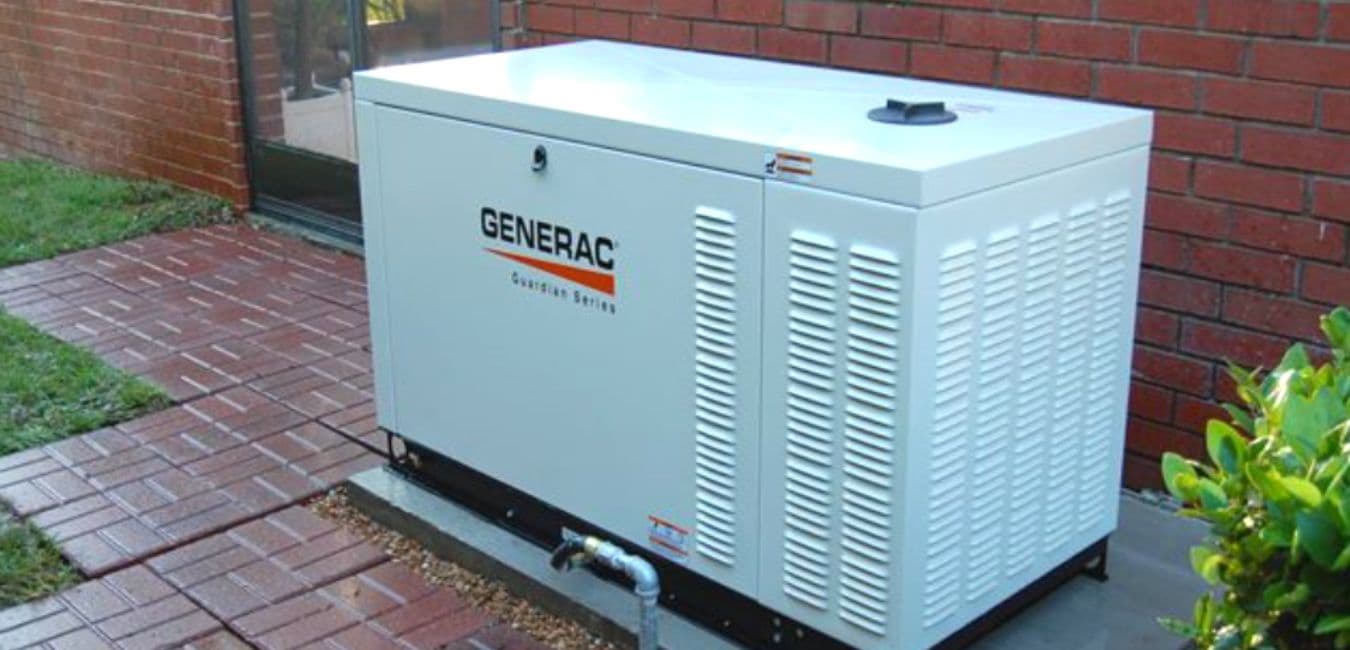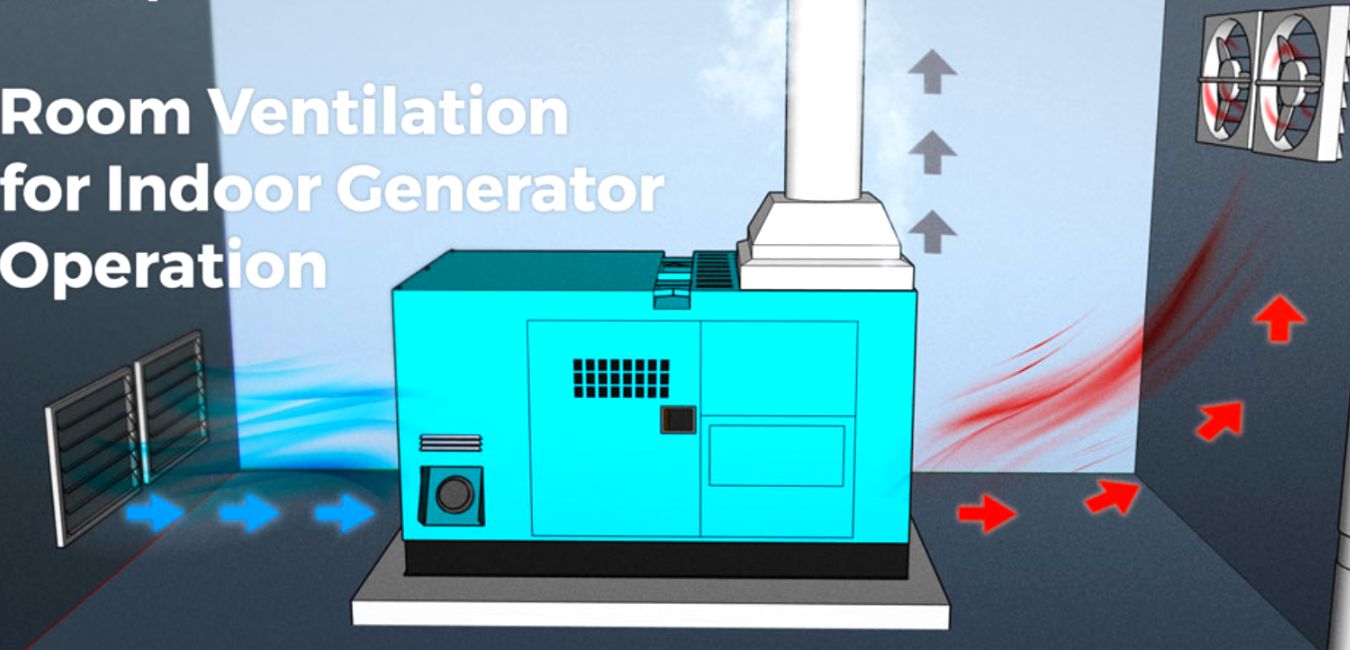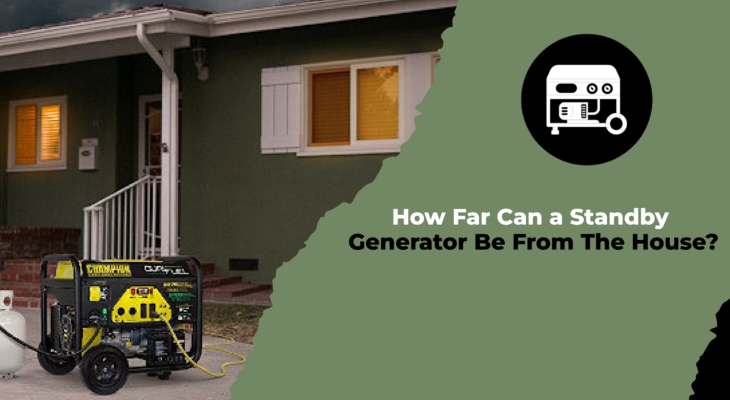How far a standby generator can be placed is the most frequently asked question. In this article, you will get to know everything about the placement of generators and the necessary precautions. The standard recommendation when installing a standby generator is that it be placed between and 10 feet away from your home. Depending on the type of generator, this clearance distance may change.
Since portable generators emit poisonous chemicals like carbon monoxide, which is dangerous if inhaled, they should, for instance, never be positioned next to doors or windows and should always be situated at least 20 feet away from buildings.
Sound pollution is another factor to consider when deciding whether to place a generator near your home. The noise will become louder the closer the generator is. There are also additional clearance guidelines for how far a standby generator can be from the house in addition to the previously mentioned distance.
There should be a 3-foot clearance in front of the generator for service and maintenance purposes. Maintaining a space of 1.5 feet or more between the generator and the building is recommended when there are no doors or windows on the building wall.
Placement Considerations for a Standby Generator
When building a generator, there are other factors to take into account than how distant it should be from the house. Before installing your standby generator, it would be preferable if you also took the following aspects into account.

Fuel type
Keeping the generator close to the gas meter is best if it runs on gas. If the generator is too far away, an extra pipe will be needed. It will cost more money for personnel and supplies and even result in inconsistent gas supply.
The Exhaust’s Direction
During the process of producing electricity, harmful gases are released from the combustion of fuel. Determining a fair distance for a generator to be from a window is important for safety reasons, thus it follows that you should place the exhaust outside of the building. Make sure the gas won’t be blown back into the home through the windows by the wind. The fumes will escape if you direct the exhaust in the opposite direction.
The fumes will be blown away from the windows by placing the exhaust in the other direction.
Level of noise
It is advised to choose a generator with the least amount of noise. Do propane generators make a quieter noise? has additional information on this. You can reduce the impact of sound by situating the generator away from your home because all generators produce noise, albeit to varying degrees.
The NFPA (National Fire Protection Association) Codes
As you install the generator, be aware of these codes and abide by them. The risk of electrical fires can be decreased by following these laws.

Regional Rules
There are several laws and rules governing electrical installations in every city and region. For the installation of a generator, specific permits are needed. possess proper
Local laws
Each city and region has its own laws and rules governing electrical installations. Permission may be needed in some locations to install a generator. Prior to beginning the installation, make sure you are well-informed about these legal requirements.
Take into account the manufacturer’s specifications
The criteria of the manufacturer should not be overlooked. Before beginning the installation, consult the user handbook and read over everything.
Placement Tips For Standby Generators
A standby generator installed incorrectly might endanger humans and the machine. If you want to install your generator, the advice provided here will be helpful. You can adjust your generator’s placement if you’ve already done so.
Put the generator on a level surface.
When running, the generators vibrate and make a lot of noise. If the generator is not set up on a level floor, the noise will get considerably louder. If the generator is set up on uneven ground, there is also a chance that it can trip, which could cause gasoline to spill and present dangers. Therefore, always ensure that the generator is set up on a level surface.

Position It Near the Service Panel
The service panel is used to deliver the generator’s electricity to the home. Therefore, installing the generator next to the service panel will help you avoid making unneeded material purchases. If you intend to install the generator distant from the panel, the material cost will be higher.
Make sure that the floor is dry.
Since water is a good conductor of electricity and might result in short circuits within a machine, you should keep all electrical equipment in a clean, dry location. This rule also applies to generators. It might result in a malfunctioning generator, a total breakdown, or even electric shocks or an electrical fire. It might result in a malfunctioning generator, a total breakdown, or even electric shocks or an electrical fire. The best approach to prevent dangerous circumstances is to always store your generator on a dry floor. Are generators genuinely watertight, despite what the majority of manufacturers claim?
Proper airflow is required.
When a generator is running, it has to have adequate airflow around it since the motors inside heat up. The machine will generate less heat and won’t overheat if there is adequate circulation across it. The likelihood of dangerous gases accumulating nearby may be reduced as a result of good air circulation.

Cut Back on Cord Length
Since generators are loud, most people keep them as far away from their homes as they can. However, it is advised to keep the chord’s length to no more than 20 meters because a longer cord may cause the appliance’s engine and compressor to catch fire in the event of power surges or decreases.
Keep others out of the way
When building a generator, it is crucial to take your neighbours’ safety into account. Place your generator away from your neighbours as it produces too much heat and noise.
The guidelines for how far a generator should be from a home also apply to any nearby homes. In the event of a disturbance, your neighbours might even sue you. If there are any fireplaces nearby, move your generator because it may be a fire hazard.
How Far Can a Standby Generator Be From The House – FAQs
Conclusion
You should consider a number of factors before purchasing any type of generator. Understand the risks involved, the variables that impact where the generator should be installed, the best location for it, and the safety guidelines that must be followed. Choose the type of generator you wish to purchase only after that.
Always seek professional advice if you have any questions. Find out their opinion and see if it agrees with yours. We suggest that property owners spend their money on competent advice rather than on future equipment repairs. Decide wisely because purchasing a generator is a long-term investment.






